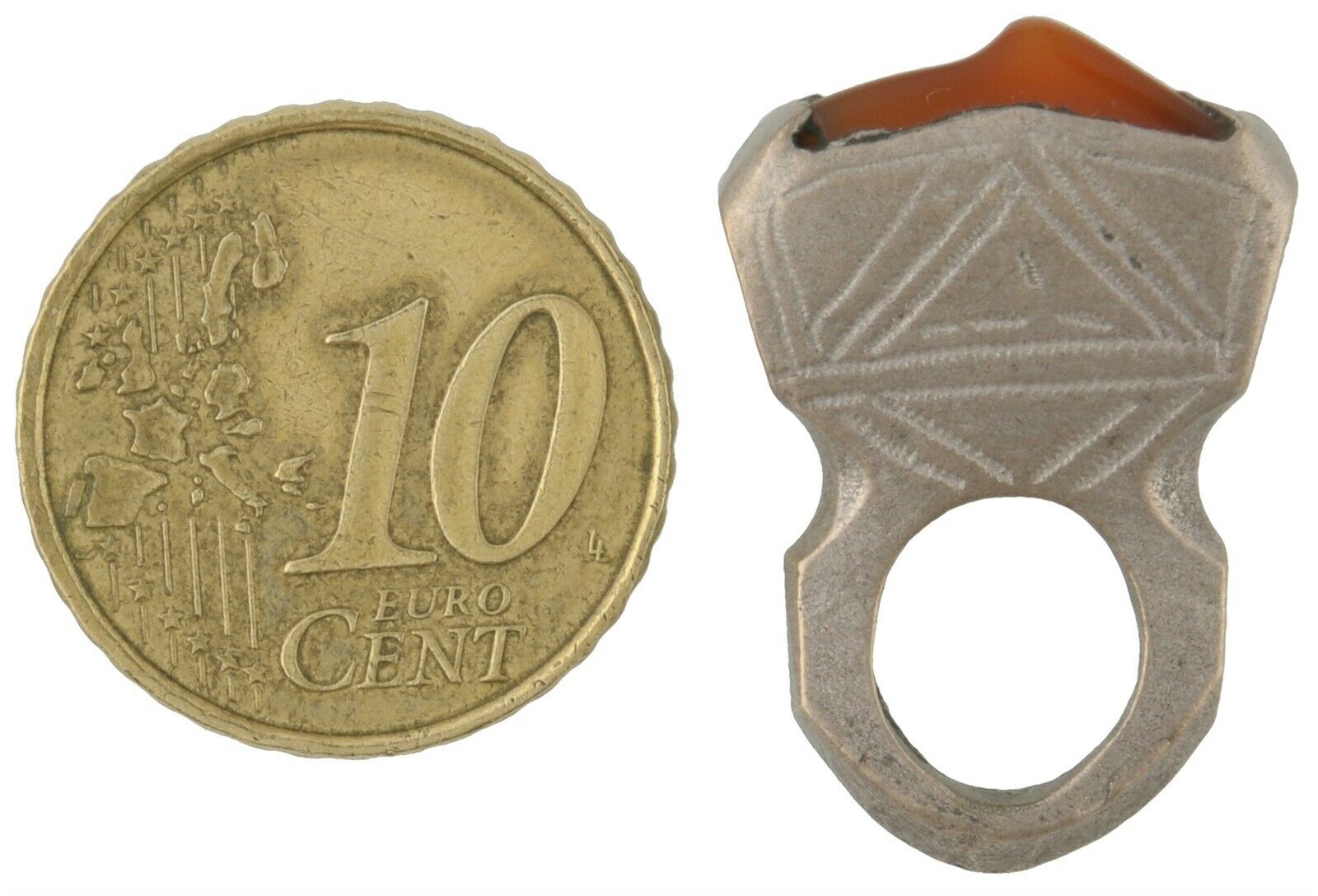-40%
Tuareg cross & Tuareg rings tanfout talhakimts Amazigh Rolo Berber necklace
$ 194.83
- Description
- Size Guide
Description
Tuareg cross pendant with Tuareg rings tanfout and talhakimts Amazigh on an antique silver Rolo chain handmade Berber necklace.Shipped with USPS 3 day First Class mail.
Tuareg tanfout rings and cross pendant with talhakimts on an antique silver Rolo chain handmade Berber necklace.
Unique silver Tuareg cross pendant from the Sahara Atlas Mountains of Morocco made by very crafted local artisans. Purchased a few years back While on another shopping spree in North Africa.
This Berber Tuareg cross measures 2.5” in total height by 2.25” in width.
It’s hanging on an 8 mm Rolo antique silver link chain that measures 19” and has an oval antique silver link extension chain of 3.5”.
So the total length of this necklace necklace can be adjusted up to 22.5” and Down to any size.
There are 8 medium authentic Tuareg tanfout rings in blue, green and red from Morocco that measure 1” in height by 1/2” in width.
There are 19 small red, green and blue talhakimts that measure 14mm.
There is a small carnelian Tuareg ring hanging with the cross measuring 1”.
This is finished with a large silver hook clasp closure.
Talhakimt pendants were produced by both the French and Czech-Bohemian bead industries during the trade bead era, which peaked between the late 19th and early 20th centuries. The Czech versions were made from molded glass, and came in a variety of colors, including green, red and blue.
French Talhakimts were the brainchild of Jean-Felix Bapterosses, a pioneering button and bead maker. As a young man, Bapterosses traveled to England, where he studied the “Prosser” technique of molding and firing a paste to produce a hard porcelain-like material. Bapterosses returned to France and, after making several improvements to the technique, implemented it at his button and bead factory in Briare.
Talhakimt pendants were one of the many items manufactured at the factory.
French Talhakimts, along with their Czech-Bohemian counterparts, were exported mainly to West Africa, where they were believed to have amuletic properties. Mauritanian women wore them in elaborate headdresses, plaited into long braids.
The most spectacular examples of this kind of adornment were found among the dancers of the Guedra, a traditional dance in which women displayed their love for men in ritual form.
Talhakimt pendants such as this were exported to West Africa for the bead trade throughout the course of the 20th century. Originally produced in the bead workshops of Bohemia from Czech Glass, they were molded using the Prosser method and coveted by tribal peoples as a talisman to ward off the evil eye and as part of traditional costumes. This is an original piece. Get your piece of history today!
The Berbers or Imazighen (‘Free people’; plural of Amazigh) are the original inhabitants of North Africa. They speak a number of related languages and share a common cultural heritage. Most Berbers nowadays live in Morocco, Algeria, Tunisia, Libya, Mali, Mauritania and Niger.
In Berber culture, jewelry has a symbolic and mythical meaning besides their practical and ornamental function, as they are used as charms and talismans to protect against evil spirits and influences. In addition, acquiring jewelry has an economic meaning. An Amazigh woman’s jewelry is her private property. She may buy, and then later sell jewelry to support her family in dire economic times. With the money she might also buy cattle or land. Smart commercial use makes women apt family bankers.
Berbers call themselves some variant of the word i-Mazigh-en (singular: a-Mazigh), possibly meaning “free people” or “noble men”. The name probably had its ancient parallel in the Roman and Greek names for Berbers, Mazices.
The berber language (Tamazight) is one of the oldest languages of humanity. Nowadays, it is spoken by the people of North Africa , Egyptian oasis of Siwa and the Touaregs in the Sahara (desert).
From Central Atlas Tamazight ⴰⵎⴰⵣⵉⵖ (amaziɣ). From the active participle ⴰⵎ (am) and ⴰⵣⵉⵖ (aziɣ), whose meaning is unknown but is possibly related to “aze” (“to be strong” in Taznatit), or perhaps “jeɣeɣ” (“to be brave” in Tamasheq); z and j frequently swap out in The Berber are the indigenous people of North Africa, west of the Nile Valley. Many Berbers call themselves some variant of the word Imazighen(singular: Amazigh), possibly meaning “free people” or “free and noble men”. The word has probably an ancient parallel in the Roman name for some of the Berber, “Mazices”.
The name Berber comes from the name given to this people by the Romans, meaning barbarians. The history of the Berber people in northern Africa is both extensive and diverse. Their oldest ancestors settled in the East of Egypt.




















